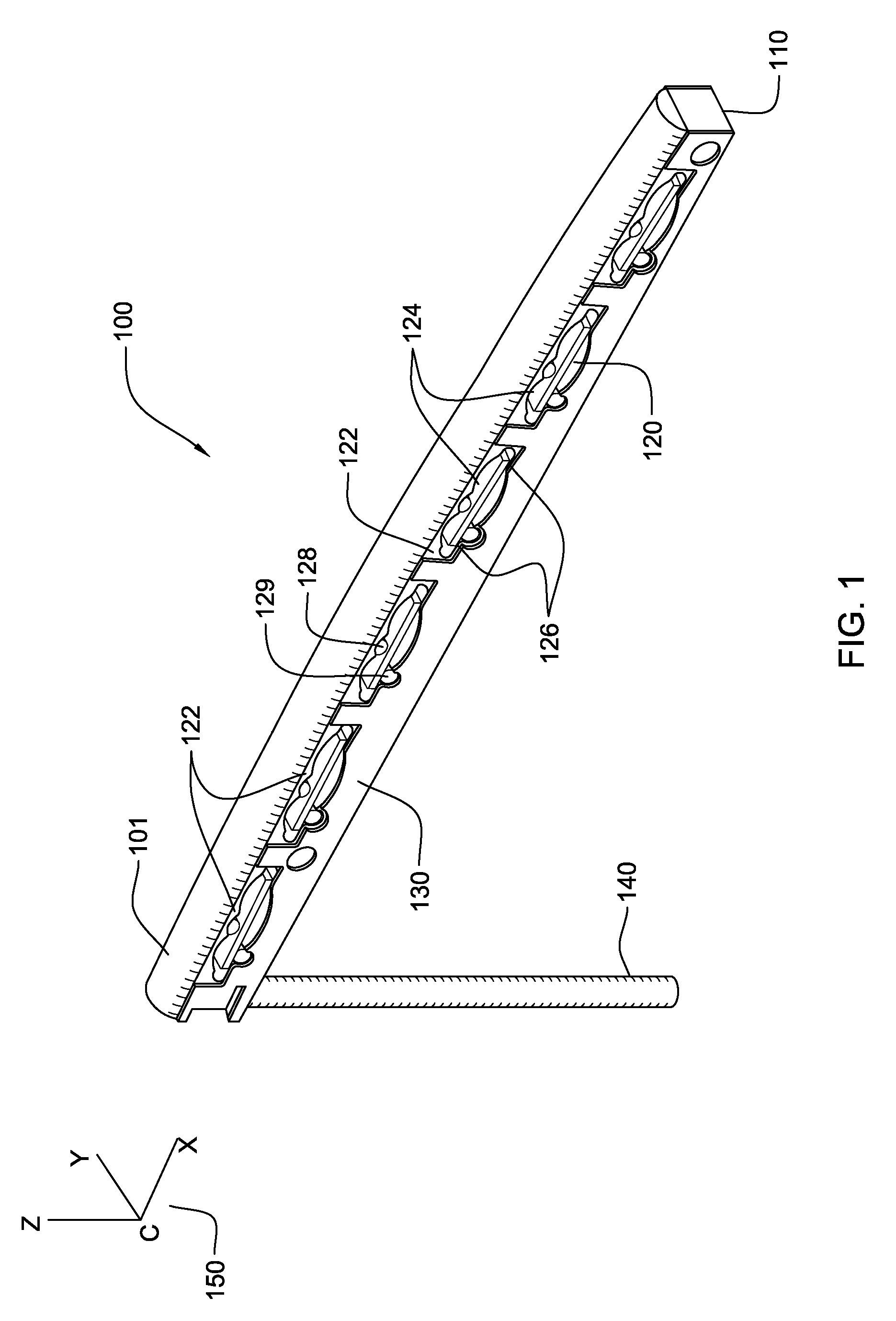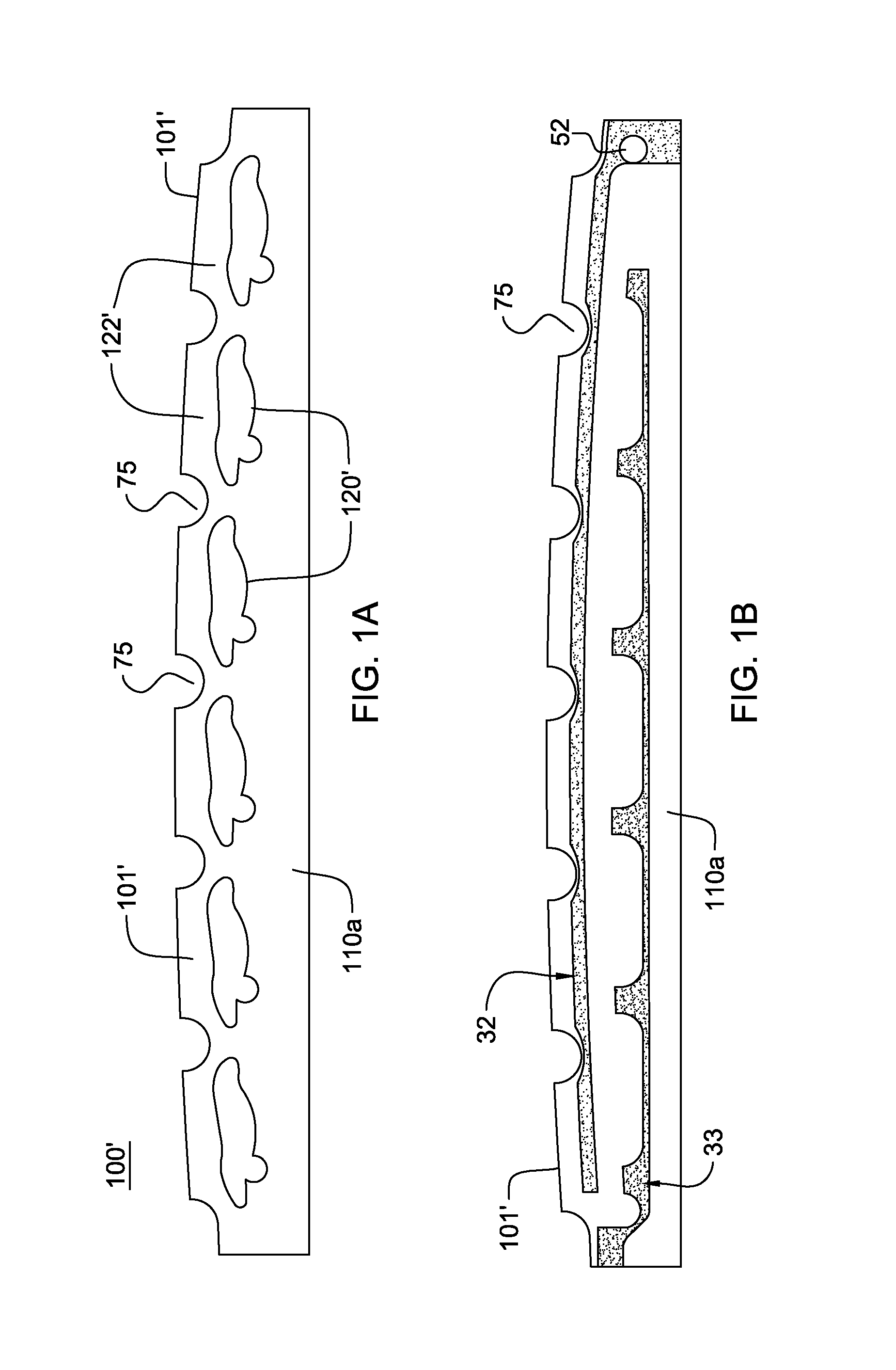Transducer saddle for stringed instrument
a technology of transducer saddle and stringed instrument, which is applied in the field of stringed musical instruments, can solve the problems of micro-phonic noise, ineffectiveness of microphone, and inability to pick up vibrating sound, etc., and achieves the effects of eliminating micro-phonic noise, high efficiency, and high fidelity
- Summary
- Abstract
- Description
- Claims
- Application Information
AI Technical Summary
Benefits of technology
Problems solved by technology
Method used
Image
Examples
first embodiment
[0045]FIG. 1 shows a unitary string saddle system 100 according to an exemplary embodiment of the present invention. Top saddle strip 101 supports the tensioned strings (not shown) over the body portion 110. Body portion 110 comprises a laminated construction of printed circuit board or like materials, e.g., copper clad FR4, or may comprise similar structures for embedding a circuit path of conductor material such as copper. Within the body portion there is further included a plurality of embedded cavity structures 120 located in articulation with a respective string. In the embodiment depicted, there are 6 cavity structures 120; one for each string on a six-string musical instrument such as a guitar. The body portion 110 also comprises two opposing surfaces described in further detail in the following figures. Cavity structures 120 define and form a vertically compliant area of sensitivity 122 in the body portion that is responsive to vibratory energy from the corresponding string....
second embodiment
[0107]In an alternative embodiment, the entire string saddle and body is divided into mechanically and electrically discrete individual unitary saddle body segments, a separate and discrete segment supporting each string. Each discrete saddle / body segment containing all the described elements for transducer mounting, circuitry and electrical and mechanical coupling of a suspended transducer and supporting an individual tensioned string over each separate corresponding top and body portion segment. This embodiment, referred to as a string saddle “kit”, comprises a plurality of individual string saddle segments, each saddle segment in correspondence with a respective string of an instrument to receive vibratory energy there from. The benefits of such an arrangement are many, including the ability to individually alter the total length of each string (also known as intonation), individual string height adjustment, as well as the flexibility to install multiple string saddles and wire t...
PUM
 Login to View More
Login to View More Abstract
Description
Claims
Application Information
 Login to View More
Login to View More - R&D
- Intellectual Property
- Life Sciences
- Materials
- Tech Scout
- Unparalleled Data Quality
- Higher Quality Content
- 60% Fewer Hallucinations
Browse by: Latest US Patents, China's latest patents, Technical Efficacy Thesaurus, Application Domain, Technology Topic, Popular Technical Reports.
© 2025 PatSnap. All rights reserved.Legal|Privacy policy|Modern Slavery Act Transparency Statement|Sitemap|About US| Contact US: help@patsnap.com



